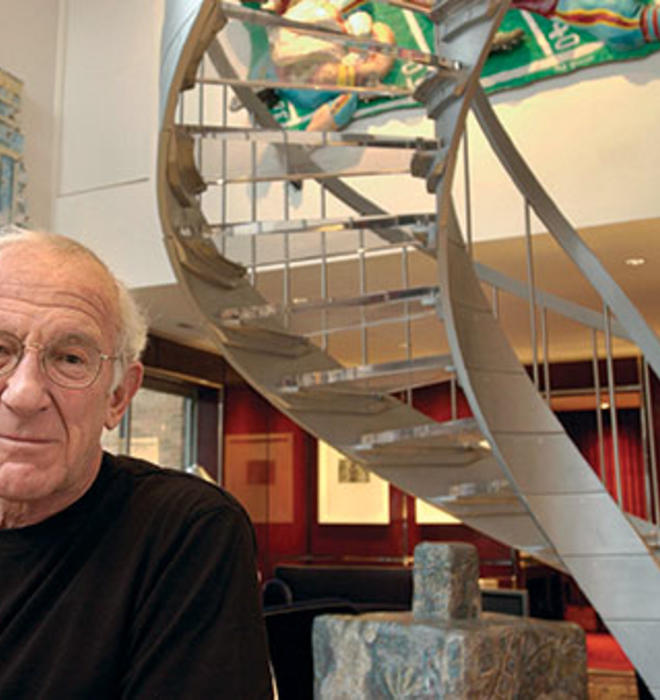
Nov. 11, 1933 – Nov. 23, 2013
When Shirley Tilghman asked Peter B. Lewis ’55 to consider funding a new, cutting-edge genomics center, he was excited about doing something that had not been done before. And the more she emphasized the risks involved, the more his excitement grew.
“My expectation was that any donor thinking of a very, very substantial gift would like some assurances of its success,” says Tilghman, then a molecular biology professor who soon would be named Princeton’s president. “Not Peter. What really sparked his interest was that ... we were going to take risks.”
For Lewis, taking a $35 million chance on what would become the Lewis-Sigler Institute for Integrative Genomics (other donations funded the Lewis Center for the Arts and the Lewis Library) was another manifestation of the brash confidence that enabled him to turn his father’s 100-employee business into the country’s fourth-largest auto insurer, partly by taking on the risks of untapped markets — such as people with bad driving records and owners of exotic sports cars. When Lewis died in November from a heart attack, Progressive Corp. had more than $16 billion in sales and 26,000-plus employees.
It is telling that Lewis named his yacht the Lone Ranger. He advocated causes and organizations eschewed by other corporate bigwigs. After part of his left leg was amputated in 1998, Lewis used marijuana to manage pain and then bankrolled groups fighting for its legalization. He was a major contributor to the American Civil Liberties Union, the Center for American Progress, Human Rights Watch, the Southern Poverty Law Center, and other groups supporting individual rights and social change.
Lewis was “a true believer in justice, fairness, equality, and the plight of the less advantaged,” says Anthony Romero ’87, executive director of the ACLU. But Lewis was not a “passive investor in any charitable cause,” Romero says. “He wanted to understand the how and the what, and not just the why.”
When he didn’t like that how or what, Lewis could be prickly. He boycotted Cleveland philanthropies to protest “an incestuous old-boy network of interlocking board members on local charities” in his hometown, according to The Plain-Dealer. Once the largest individual patron of New York’s Guggenheim Museum, Lewis withdrew financial support and resigned from its board in 2005 after publicly disagreeing with museum management. He scrapped a dream home being designed by architect Frank Gehry when they couldn’t agree on plans and costs soared, though he remained Gehry’s fan and friend and pushed successfully for the architect to design the science library Lewis was funding at Princeton.
In 2012, Lewis signed the Giving Pledge, a campaign to have the world’s richest people dedicate most of their wealth to philanthropy. By then, he had given away half of his fortune — estimated by Forbes at $1.4 billion in 2006 — including more than $220 million to Princeton. With his pledge, Lewis wrote that his life followed several catch phrases. “Think outside the lines,” he wrote. “Problems are opportunities.”
Fran Hulette is PAW’s Class Notes and memorials editor.






No responses yet